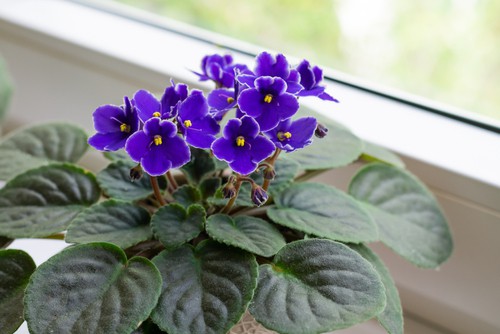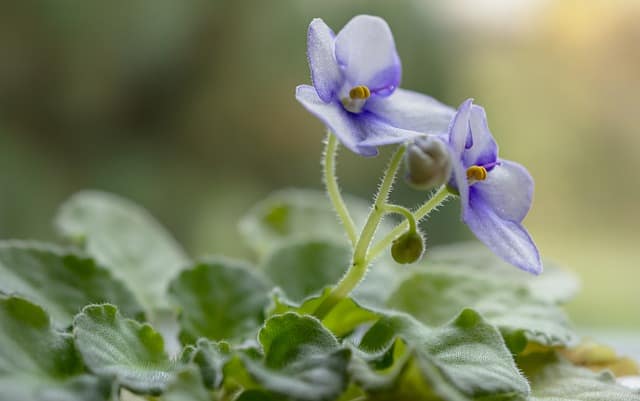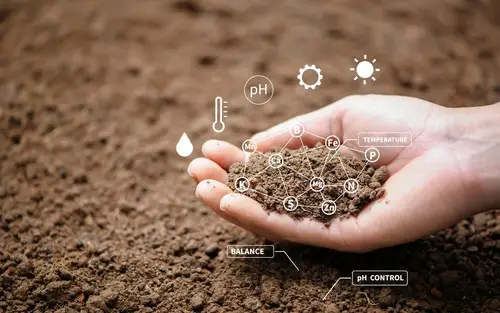African violets are a popular houseplant known for their beautiful purple blooms and lush green leaves. However, sometimes, white spots can appear on the leaves, causing concern for plant owners. These African violet white spots can be caused by a variety of factors, including pests, fungal infections, genetic mutations, and poor growing conditions.
Understanding African violets and their common issues, including white spots on leaves, is important for maintaining their health and beauty. Identifying the cause of white spots is the first step in preventing and treating them.
Some of the most common causes of white spots include powdery mildew, pest infestations, improper fertilization, sudden temperature changes, and poor water quality.
Prevention and treatment of white spots on African violet leaves can vary depending on the cause. Proper care, including providing adequate light, water, and nutrients, can help prevent many issues.
Additionally, treatments such as neem oil or fungicides may be necessary to address pest or fungal problems. With the right care and attention, African violets can thrive and remain free of white spots on their leaves.
Key Takeaways
- Understanding African violets and their common issues is important for maintaining their health and beauty.
- Identifying the cause of white spots on African violet leaves is the first step in preventing and treating them.
- Proper care, including providing adequate light, water, and nutrients, can help prevent many issues.
Check out these other related posts:
- African Violet Flowers Turning Brown
- Adenium Leaves Turning Yellow
- Why Does My Pothos Have Brown Spots?
Understanding African Violet

African violets are a popular indoor plant known for their delicate and colorful flowers. They are easy to care for and can bloom year-round, making them a favorite among many plant enthusiasts.
African violets belong to the genus Saintpaulia and are native to Tanzania and Kenya. They were first discovered in the late 19th century by Baron Walter von Saint Paul-Illaire, a German colonial official.
African violets are compact plants that grow up to 6-8 inches tall. They have a rosette of leaves that grow from a central point, with each leaf being about 2-3 inches long. The leaves are typically dark green, but some varieties may have variegated or lighter-colored leaves.
African violets bloom in clusters of small, delicate flowers that can be pink, purple, blue, or white. They require bright but indirect light, moderate humidity, and well-draining soil.
As indoor plants, African violets are relatively low-maintenance. They do not require frequent watering and can be grown in small pots. However, they are susceptible to a few common problems, including white spots on their leaves. These spots can be caused by a variety of factors, including fungal infections, pests, and genetic mutations.
To keep African violets healthy and free from white spots, it is important to provide them with the right growing conditions. This includes placing them in a bright but indirect light, keeping the soil moist but not waterlogged, and providing them with regular fertilizer.
It is also important to keep them away from cold drafts and to avoid getting water on their leaves, as this can lead to fungal infections.
Identifying White Spots on Leaves
African violets are a popular indoor plant for many people. They are known for their beautiful, variegated leaves and vibrant flowers. However, sometimes African violet leaves can develop white spots that may indicate a problem with the plant’s health. Identifying the cause of these white spots is essential for maintaining a healthy plant.
1. Symptoms of Disease
One of the most common causes of white spots on African violet leaves is powdery mildew. Powdery mildew is a fungal disease that can cause a white, powdery substance to form on the leaves. This substance can spread quickly and cause the leaves to turn white. If left untreated, the leaves may become distorted and eventually fall off the plant.
Another disease that can cause white spots on African violet leaves is leaf spot. Leaf spot is a bacterial or fungal infection that can cause small, white spots to appear on the leaves. These spots may eventually turn brown or black and cause the leaves to wither and die.
2. Role of Environmental Factors

Environmental factors can also contribute to the development of white spots on African violet leaves. For example, sudden changes in temperature or humidity can stress the plant and cause the leaves to turn white. Additionally, if the plant is not receiving enough light or nutrients, the leaves may turn white due to a lack of chlorophyll.
3. Impact of Pests
Pests can also cause white spots to appear on African violet leaves. Mealybugs and aphids are common pests that can infest African violets and cause white spots to appear on the leaves. These pests feed on the sap of the plant, which can cause the leaves to turn white and eventually die.
In conclusion, identifying the cause of white spots on African violet leaves is crucial for maintaining a healthy plant. By understanding the symptoms of disease, role of environmental factors, and impact of pests, plant owners can take appropriate steps to ensure their African violets remain healthy and vibrant.
African Violet Leaves – 4 Common Problems
African violets are delicate plants that require proper care and attention to thrive. White spots on the leaves of African violets can be caused by various factors, including watering, light, nutrient, pest and disease factors.
1. Watering and Humidity Factors
Overwatering and underwatering can cause white spots on African violet leaves. It is important to water the plant thoroughly but avoid leaving the soil waterlogged.
Bottom-watering is recommended to prevent water droplets from forming on the leaves, which can lead to powdery mildew. High humidity levels can also contribute to the development of powdery mildew.
2. Light and Temperature Factors
Direct sunlight can cause sunburn and yellowing of African violet leaves, while too little light can result in yellow leaves and stunted growth. Temperature fluctuations, especially during winter and spring, can also lead to white spots on the leaves. African violets prefer indirect light and a stable temperature between 60-80°F.
3. Nutrient and Soil Factors

African violets require proper nutrients, including nitrogen, potassium, magnesium, and calcium, to maintain healthy chlorophyll levels. Improper fertilization can lead to white spots on the leaves. It is important to use a balanced fertilizer and avoid over-fertilizing the plant. Poor soil quality can also contribute to the development of white spots.
4. Pest and Disease Factors
Pest infestations, such as mealybugs, aphids, and thrips, can cause white spots on African violet leaves. The cyclamen mite can also cause white spots and stunted growth.
Powdery mildew, a fungal disease, is a common cause of white spots on African violet leaves. It can be caused by poor air circulation, high humidity, or overwatering. Root-knot nematodes can also cause white spots on the leaves.
Prevention and Treatment of African Violet White Spots
African violets are beautiful houseplants that can brighten up any room. Unfortunately, they are also susceptible to white spots on their leaves, which can be caused by various factors, including pests, diseases, and environmental conditions. Here are some prevention and treatment methods to help keep your African violets healthy and free from white spots.
1. Cultural Practices
Cultural practices can go a long way in preventing and treating white spots on African violet leaves. Here are some tips:
- Keep the plant in a location that receives bright, indirect light but avoid direct sunlight.
- Maintain a consistent temperature between 65-75°F (18-24°C).
- Keep the soil moist but not waterlogged. Water the plant from the bottom or use a pebble tray to keep the soil evenly moist.
- Avoid getting water on the leaves, as this can lead to fungal growth.
- Increase humidity around the plant by using a humidifier or placing a sheer curtain over the plant. This can help prevent powdery mildew and other fungal diseases.
2. Chemical Treatments

Chemical treatments can be effective in controlling pests and diseases that cause white spots on African violet leaves. Here are some options:
- Insecticidal soap or neem oil solution can be used to control pests such as thrips, mealybugs, and aphids.
- Fungicides can be used to treat fungal diseases such as powdery mildew and leaf spot.
- Isopropyl alcohol can be used to clean the leaves and remove any sap or residue left by pests.
Before using any chemical treatment, read and follow the label instructions carefully to avoid damaging the plant.
3. Natural Remedies
Natural remedies can also be effective in preventing and treating white spots on African violet leaves. Here are some options:
- Use a fan to increase air circulation around the plant and prevent fungal growth.
- Mix 1 teaspoon of baking soda with 1 quart of water and spray the affected leaves and stems with this solution. This can help control powdery mildew.
- Place the plant in a location with bright, indirect light or use a grow light to promote healthy growth.
- Use a pebble tray or humidifier to increase humidity around the plant.
These natural remedies can be used in combination with cultural practices and chemical treatments to provide comprehensive care for your African violet plant.
Remember that prevention is key to keeping your African violet plant healthy and free from white spots. By following these tips and taking good care of your plant, you can enjoy its beauty for years to come.
Conclusion
African violets are beautiful and delicate plants that require proper care and attention to thrive. White spots on African violet leaves can be caused by various factors, including pest infestation, fungal infections, genetic mutation, sudden temperature changes, improper fertilization, poor water quality, and more.
To prevent white spots on African violet leaves, it is essential to maintain a healthy growing environment for the plant. This includes providing adequate light, water, and fertilizer, as well as ensuring proper air circulation and temperature control.
Regularly inspecting the plant for signs of pests or disease and taking prompt action to address any issues can also help prevent white spots from forming.
If white spots do appear on African violet leaves, it is important to identify the underlying cause and take appropriate action to address it. This may involve treating the plant with a fungicide, adjusting the growing conditions, or removing any infected leaves or plants to prevent the spread of disease.
Overall, with proper care and attention, African violets can thrive and provide a beautiful addition to any home or garden. By understanding the causes of white spots on African violet leaves and taking proactive steps to prevent and address them, plant owners can enjoy healthy, vibrant plants for years to come.
Frequently Asked Questions
How do I treat white spots on my African violet leaves?
The best way to treat white spots on African violet leaves is to first identify the cause of the problem. Powdery mildew is a common cause of white spots on African violet leaves and can be treated by removing affected leaves and increasing air circulation around the plant.
Other causes of white spots, such as pests or nutrient deficiencies, require different treatments. It is important to properly identify the cause before treating the problem.
What causes yellow spots on African violet leaves?
Yellow spots on African violet leaves can be caused by a variety of issues, including overwatering, nutrient deficiencies, or pests. It is important to properly identify the cause of the yellow spots before treating the problem. In some cases, yellow spots may be a natural part of the plant’s growth cycle.
What is the best fungicide for African violets?
There are several fungicides that can be used to treat fungal diseases on African violets, including neem oil, copper fungicides, and sulfur fungicides. It is important to carefully follow the instructions on the fungicide label and use the appropriate safety precautions when applying fungicides.
What are the signs of overwatering African violets?
Signs of overwatering African violets include yellowing leaves, wilting, and root rot. It is important to allow the soil to dry out slightly between waterings and to avoid getting water on the leaves or crown of the plant.
How do I identify and treat African violet fungus?
African violet fungus can be identified by the presence of white or gray powdery spots on the leaves. To treat African violet fungus, remove affected leaves and increase air circulation around the plant. Fungicides may also be used to treat severe cases of fungus.
What are the white bugs on my African violets?
The white bugs on African violets are likely mealybugs, a common pest that feeds on the sap of plants. Mealybugs can be treated by removing affected leaves and using insecticidal soap or alcohol to kill the bugs. It is important to properly identify the pest before treating the problem.

Hey, I’m Lisa and I’ve been an avid gardener for over 30 years. I love writing, talking and living in the garden! Feel free to connect with me on my socials below

